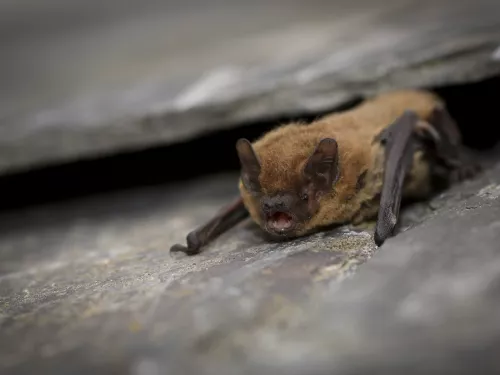
Common pipistrelle
The common pipistrelle is so small, it can fit into a matchbox! Despite its size, it can easily eat 3,000 insects a night: look for it flitting around the garden or a lit lamp post as it chases its prey.

The common pipistrelle is so small, it can fit into a matchbox! Despite its size, it can easily eat 3,000 insects a night: look for it flitting around the garden or a lit lamp post as it chases its prey.
The common polypody is a hardy fern of damp, shady places in woodlands. It also makes a good garden fern. It has ladder-like, leathery foliage with pimply undersides - these spots are the spores.
The common pond skater can be seen 'skating' over the surface of ponds, lakes, ditches and slow-moving rivers. It is predatory, feeding on small insects by detecting vibrations in the water's surface.
Once considered a weed of cornfields, the Common poppy is now in decline due to intensive agricultural practices. It can be found in seeded areas, on roadside verges and waste ground, and in field margins.
The common prawn is a familiar sight to anyone who has spent time exploring rockpools - particularly their characteristic quick dart into the darkness just as you spot them!
This common fungus puffs out clouds of spores when it's mature.
A renowned 'weed' of paddocks, pastures and waste ground, the yellow flower heads of common ragwort are actually highly attractive to bees and other insects, including the cinnabar moth.
The common red soldier beetle is also known as the 'bloodsucker' for its striking red appearance, but it is harmless. It is a beneficial garden insect as the adults eat aphids, and the larvae eat other pests.
The extensive, golden-brown reedbeds that are formed by stands of Common reed are a familiar sight in our wetlands. They provide an important home for many species, including the rare Bittern.
Look for the small, pink, pea-shaped flowers of Common restharrow on chalk and limestone grasslands, and in coastal areas, during summer.
Golden banks of common rock-rose make a spectacular sight on our chalk and limestone grasslands in summer. A creeping shrub, it is good for bees, moths and butterflies.
The common rosefinch is a rare visitor to the UK, usually passing through in autumn.